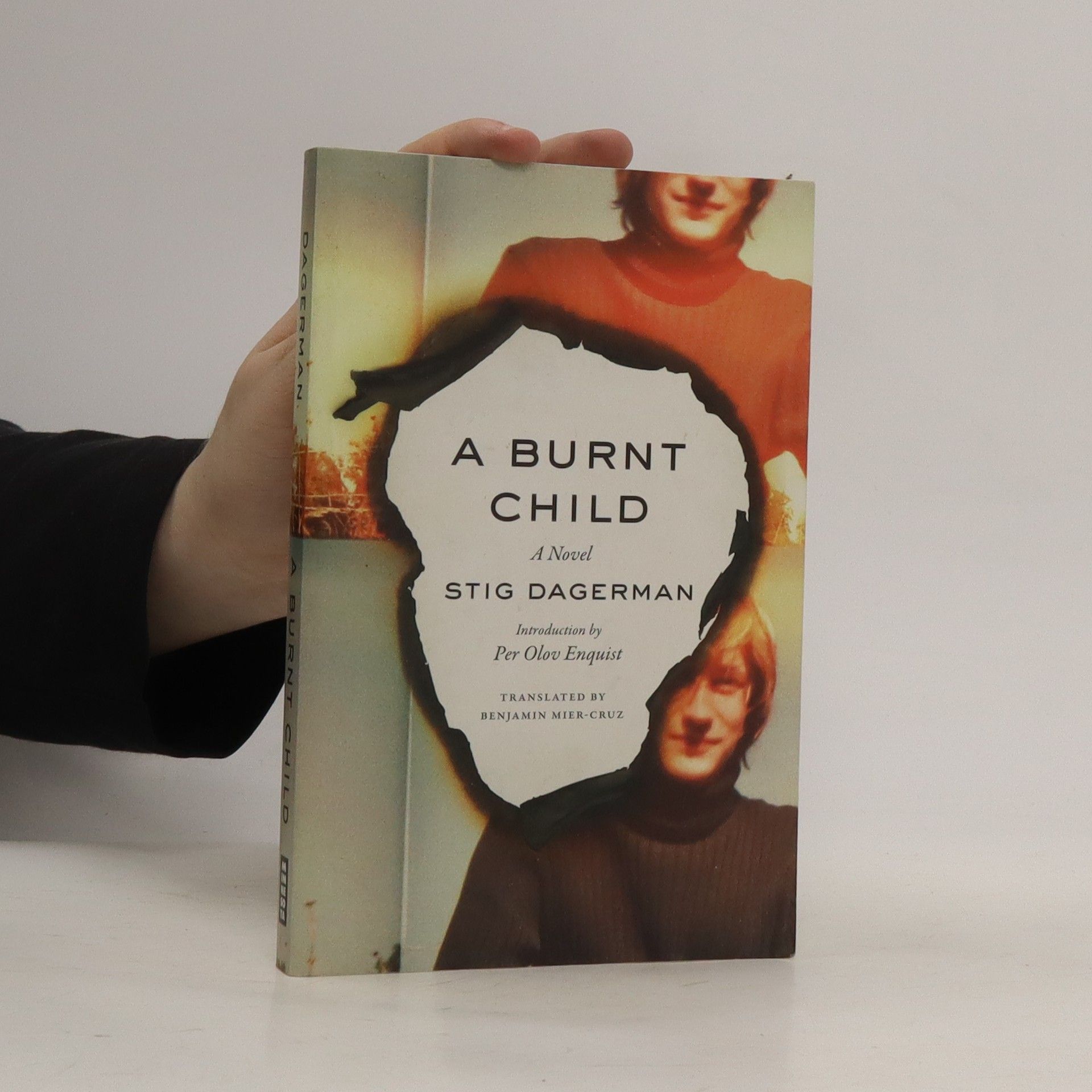German Autumn
- 128 páginas
- 5 horas de lectura
First published as Tysk heost: [Stockholm], Sweden: Norstedts, 1947.
Stig Dagerman fue uno de los autores suecos más destacados de la década de 1940, explorando los problemas universales de la moral y la conciencia, la sexualidad y la filosofía social, el amor, la compasión y la justicia. Se sumergió en las dolorosas realidades de la existencia humana, diseccionando sentimientos de miedo, culpa y soledad. A pesar de su contenido sombrío, su obra se caracteriza por un agudo sentido del humor que ocasionalmente transforma su escritura en burlesque o sátira.







First published as Tysk heost: [Stockholm], Sweden: Norstedts, 1947.
Set in a working-class neighborhood in Stockholm, A Burnt Child revolves around a young man named Bengt who falls into deep, private turmoil with the unexpected death of his mother. Written in a taut and beautifully naturalistic tone, it remains Stig Dagerman's most widely read novel and is one of the crowning works of his short but celebrated career.
In a working-class neighbourhood in 1940s Stockholm, a young man named Bengt falls into deep, private turmoil with the unexpected death of his mother. As he struggles to cope with her loss, his despair slowly transforms to rage when he discovers that his father had a mistress. Bengt swears revenge on behalf of his mother's memory, but he soon finds himself drawn into a fevered and forbidden affair with the very woman he set out to destroy Written in a taut, restrained style, A Moth to a Flame is an intense exploration of heartache and fury, desperation and illicit passion. Set against a backdrop of the moody streets of Stockholm and the Hitchcockian shadows in the woods and waters of Sweden's remote islands, this is a psychological masterpiece by one of Sweden's greatest writers
Depuis la découverte, en 1981, de ce texte où Stig Dagerman, avant de sombrer dans le silence et de se donner la mort, fait une ultime démonstration des pouvoirs secrètement accordés à son écriture, le succès ne s'est jamais démenti.On peut donc, aujourd'hui, à l'occasion d'une nouvelle édition de ce « testament », parler d'un véritable classique, un de ces écrits brefs dont le temps a cristallisé la transparence et l'inoubliable éclat.
Der bedeutende schwedische Autor hat das literarische Profil der 40er Jahre in Schweden entscheidend geprägt. In den 34 Erzählungen des Bandes gibt Dagerman (1923-1954) der Lebens - Zukunftsangst einer entwurzelten Nachkriegsgeneration und der inneren und äußeren Gefährdung des Menschen spätbürgerlichen Gesellschaft überzeugenden Ausdruck. Mit tiefem Einfühlungsvermögen, stillistischer Virtuosität und zum Teil starker Symbolhaftigkeit gestaltet er Vereinsamung, gestörter Partner - und Familienbeziehungen, emotionale Grausamkeit, Mängel an menschlicher Wärme und eigene Kindheitserlebnisse
Ein verstörender Alptraum aus Gewalt und Maßlosigkeit in dörflicher Idylle 'Je unfreier und armseliger das Leben ist, desto stärker werden unsere Vorstellungen von einem anderen Dasein, vom Leben in Freiheit und Ehre.' Stig Dagerman Auch das Glück braucht einen Raum, in dem es sich entfalten kann: Schonungslos schildert Stig Dagerman die Hochzeit des Schlachtermeisters Westlund mit Hildur Palm. Statt ländlicher Idylle offenbart Dagermans sezierender Blick ein grausames Geflecht boshafter Charaktere, die einander in Hass, Habsucht, Neid und sexueller Gier verbunden sind. In der Vorbereitung zum Fest begegnet die Dorfgemeinde sich selbst - und ertränkt das Entsetzen in einer grotesk geschilderten Nacht voll Gewalt und Alkohol. Stig Dagerman entlarvt das liebliche Bild schwedischer Behaglichkeit zwischen Seen und Wäldern, das nicht nur in Deutschland immer noch vorherrscht. Der expressionistische Stil des Romans ist der Empörung des jungen.
Dve novely švédskeho autora: Irena a Nemôžeme spať. Jeho žena bola utečenkyňou z nacistického Nemecka. Oslobodzovací boj v Európe mu bol preto blízky a táto téma tvorí rámec obidvoch noviel. Živý had je symbolom strachu, ktorý sa plazí vnútri človeka zmietaného vojnou.
In "Trost" reflektiert der junge Schriftsteller Stig Dagerman über die Sinnfrage des Lebens, seine inneren Dämonen und das Streben nach Freiheit. Inmitten einer Schreibblockade verfasst er ein bewegendes autobiografisches Bekenntnis, das die Trauer über die Vergänglichkeit durch das Erleben des Augenblicks überwindet.